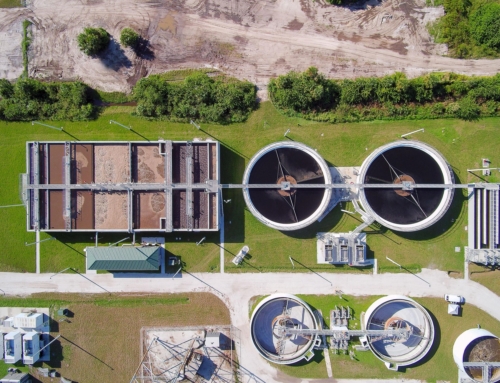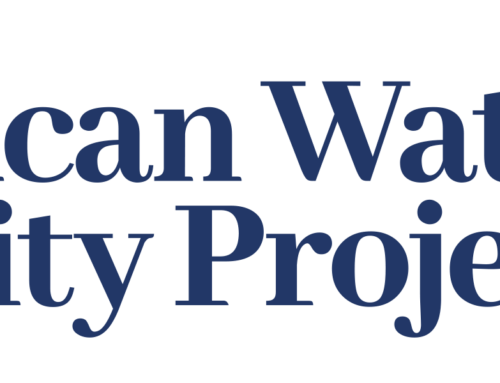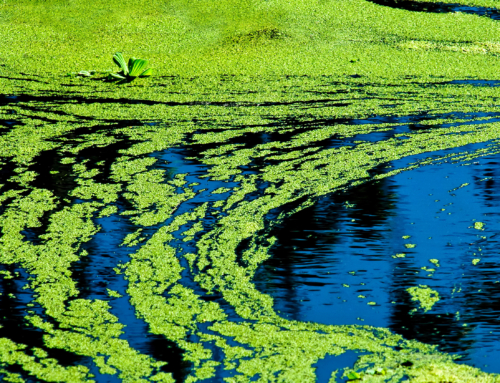Authored by the American Water Security Project’s Government Affairs Director Terry Gibson, ‘New Florida Laws and Funding Set the Stage for Clean Water‘ originally appeared in the Coastal Breeze News August 27, 2020.
In the 1980s, Dad began taking me on fly-fishing expeditions to Marco Island. He hired legendary captains Jim Grace and Phil Chapman—the latter was a fisheries biologist who worked for the state. They taught me how to interpret the ecosystems to catch more fish, which instilled a lifelong fascination with the area.

American Water Security Project government affairs director, Terry Gibson.
Recent business meetings brought me back to Marco and gave me an excuse to fish there for the first time in about a decade. I trailered my boat over from home base in Jensen Beach and spent extra days relearning the area with experts.
I ran south with Dr. Mike Savarese, a geologist from Florida Gulf Coast University, studying the impacts of climate change on the Ten Thousand Islands. I couldn’t recognize places I’ve fished dozens of times. Hurricanes and sea-level rise are drowning the refuge’s outer islands and the oyster reefs in the bays.
When we returned to the Goodland boat ramp, the tide flowed into yards along the channel. In Southwest Florida, scientists have reported that nutrients from residences with leaky septic tanks are supporting harmful algal blooms throughout the region. I wondered how many leaky septic tanks are now polluting the bay. During the wet season, even residences on higher ground with septic tanks pollute nearby local waters.
I also fished around Marco in spots suggested to me by local guide Captain Will Geraghty. I caught a few snook, a redfish, and a baby tarpon. It took perseverance to catch a few fish in places with obvious water pollution. I wasn’t imagining anything; area waters are officially “impaired.” The Conservancy of Southwest Florida gave Naples Bay a “D-” in their annual estuary report card.
Still, Southwest Florida waters are in much better shape than my home waters of the Indian River Lagoon, which collapsed mostly due to sewage pollution from one end of its 156-mile length to the other. There on the east coast, local governments did too little too late. Conversely, the hydrological restoration projects and septic-to-sewer conversions occurring in Collier County should give residents and visitors hope. If you make the investments, you may enjoy clean water and all its gifts.
The Clean Waterways Act and Environmental Accountability Act, which the legislature passed unanimously, also set the stage for clean water. As Maria Lamb wrote in her Coastal Breeze News article titled “The Clean Water Act,” Floridians can “expect more focus and less political obstruction regarding the science of water impairment and its causes.” The laws will reduce land-based pollution through tougher deterrents and penalties, inspections and reporting. They also mandate investments in the improvements of wastewater/stormwater infrastructure and agricultural Best Management Practices.
To Ms. Lamb’s question about whether the state would create a wastewater grant program to defray costs on residents, the Clean Waterways Act did create a wastewater improvement fund. Other state and federal sources are also available.
The bottom line is that investments in water and wastewater infrastructure are critical to restoring water quality. To see the costs of inaction firsthand, I point you to the collapsed Indian River Lagoon, its chronic toxic algal blooms, bacterial contamination and waning fisheries. The new laws will stem the pollution tides, but Collier County residents still need to support water infrastructure projects that make a difference.
Terry Gibson is the Government Affairs Director for the American Water Security Project, the former Fishing Editor of Outdoor Life Magazine, and the former Editor of Saltwater Fly Fishing Magazine.





